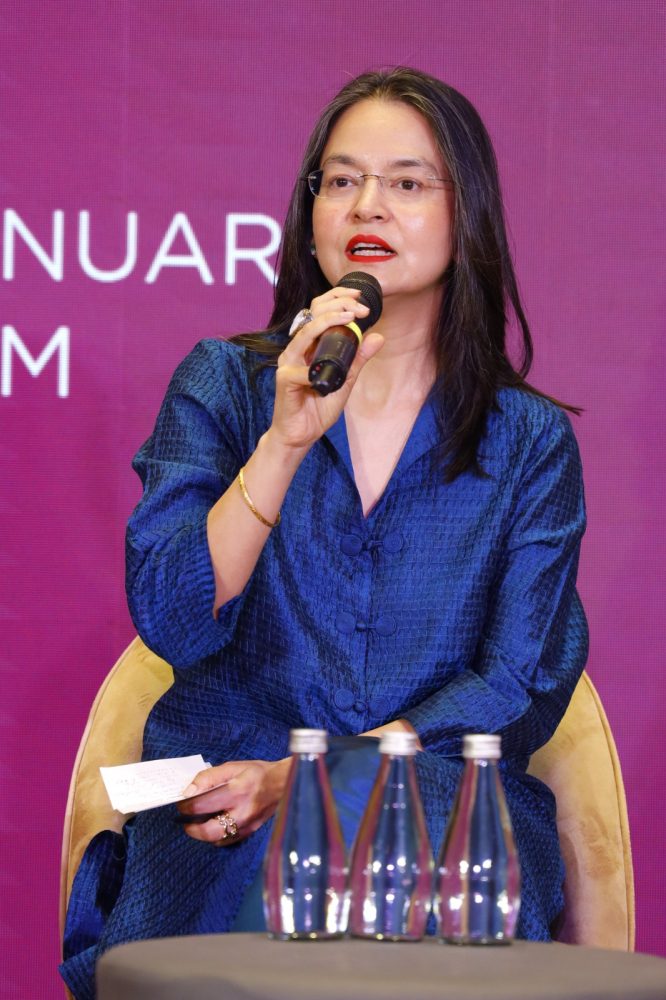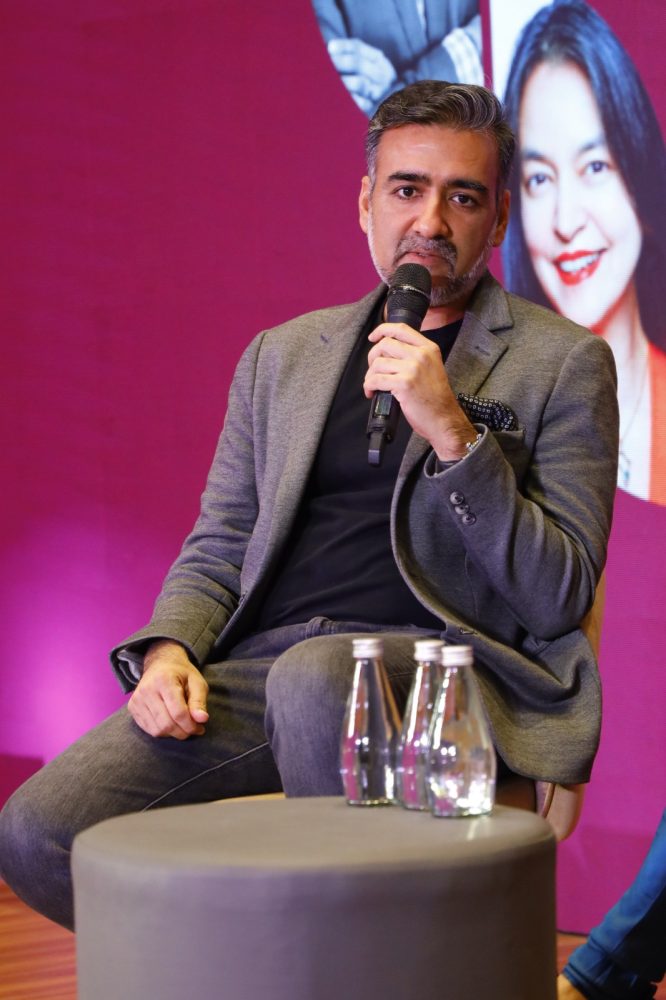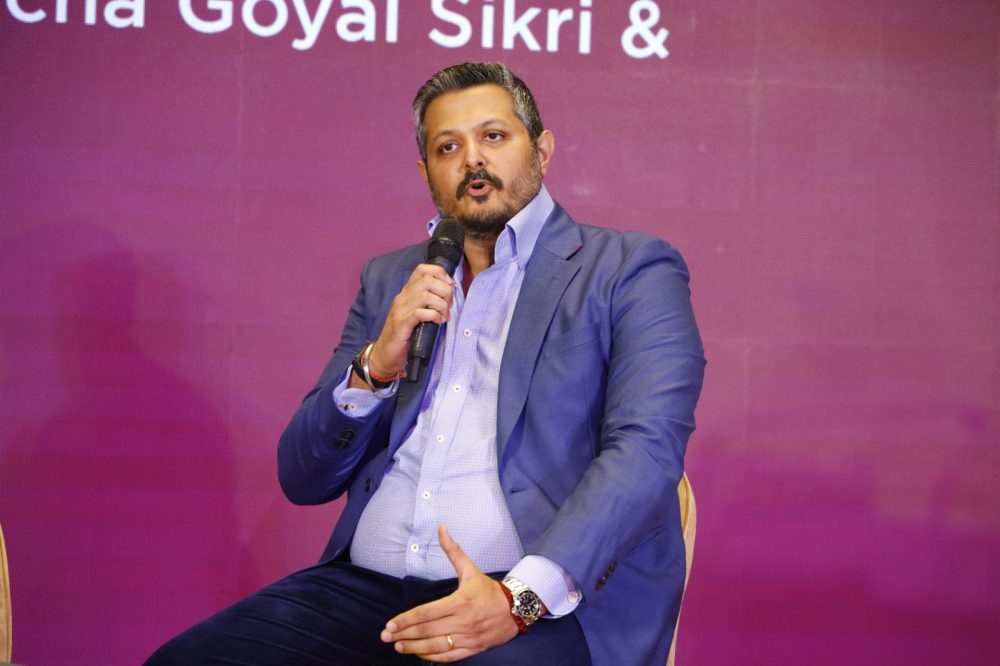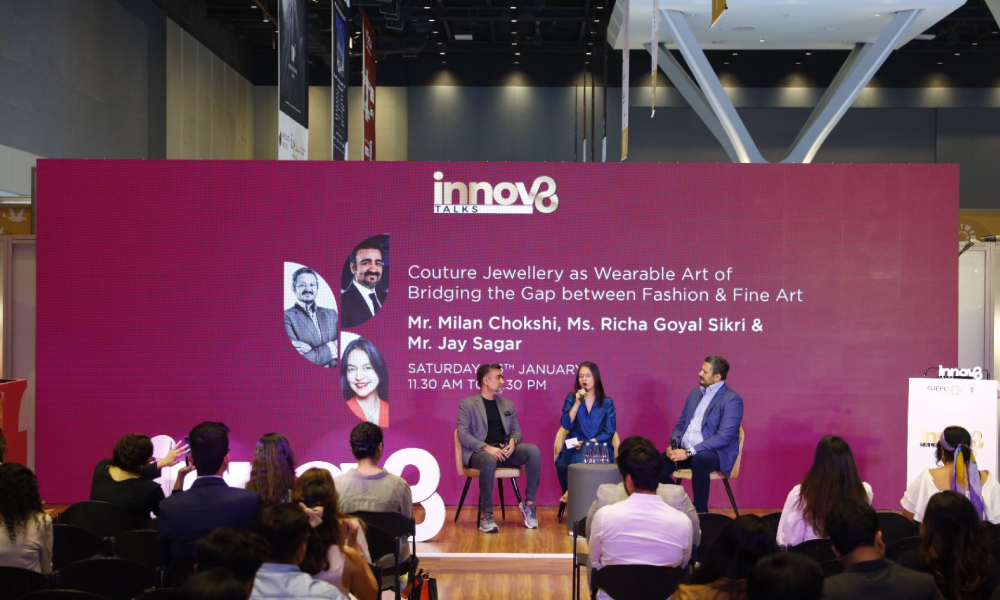An engaging panel discussion took place on the sidelines of IIJS Signature 2024, revolving around what defines jewellery as art. The panellists included Milan Chokshi, Convener, Promotion & Marketing, GJEPC, and Founder of Moksh Fine Unseen Jewellery; Richa Goyal Sikri, Independent Journalist Digital Storytelling, Instagram; and Jay Sagar, Jewellery Expert at AstaGuru Auction House.
Richa Goyal, who doubled up as a moderator and panellist, initiated the conversation by delving into the aspects that define jewellery as art, emphasising that it goes beyond its intrinsic value.

Richa Goyal Sikri
Jay Sagar stressed the importance of understanding the craftsmanship involved, whether the piece is handcrafted, and the time invested in its creation. He noted that art is an expression that combines the skills of the artist and the value addition they incorporate to make a piece timeless.
Milan Chokshi opined that one can’t put a framework around what qualifies as work of art. “It is a personal and subjective process,” he said, stressing that originality must be at the heart of each bejewelled artwork. “How one interprets it, packages it, and how the customer perceives it… the sum total of all these aspects qualifies a piece to be viewed as art.

Milan Chokshi
Goyal observed that art defies intellectualisation and can be simple or complex, with interpretation varying from person to person. She added that art must be wearable, cautioning against excessive indulgence that may overshadow practicality.
The discussion then turned to guidelines for evaluating the artistic value of wearable art. The panellists suggested criteria such as beauty, durability, aesthetic symmetry in design, finish (both obverse and reverse), rarity of gemstones, and craftsmanship. Chokshi underscored the need for a pleasing balance in design, urging creators to bring innovation to the table. “Complexity could be an engineering or a design aspect, however, it is imperative to make jewellery that is distinct.”
Addressing the question of curating jewellery, Sagar advocated for immersing oneself in various forms of art and visiting museums to evolve as a curator or a designer. When it comes to branding, the panel emphasised the importance of raising awareness, educating clients, and effective communication to stand out in the market.

Jay Sagar
Dispelling myths, the panellists clarified that design-led jewellery need not be expensive, advising against focusing on scale and size, and instead, emphasising manufacturing quality.
In advocating for simplicity as the key to longevity of a piece, Sagar stated that jewellery should bear a distinct thumbprint of individuality, going beyond rigid guidelines and resonating with stories that gracefully span across generations. “The making is important and as a curator, I only pick jewels for auction that I would have put in my own store. For me, less is more!”
Chokshi echoed this sentiment, advocating for the elevation of jewellery to the status of personal art. He urged the industry to break free from stereotypes, envisioning fine jewellery as a canvas for avant-garde creativity.
The panel collectively called for transparency within the industry, emphasizing the need to educate consumers about the stories and craftsmanship behind each piece. Their advocacy for openness in the contemporary jewellery market signals a departure from traditional norms, expressing a willingness to auction unique, contemporary pieces.
They agreed that couture jewellery emerges as a fusion of personal narrative, artistic expression, and cultural significance. As Milan Chokshi noted, “Contemporary jewellery is not just an accessory; it is a wearable masterpiece, embodying the intersection of art and personal identity.”

